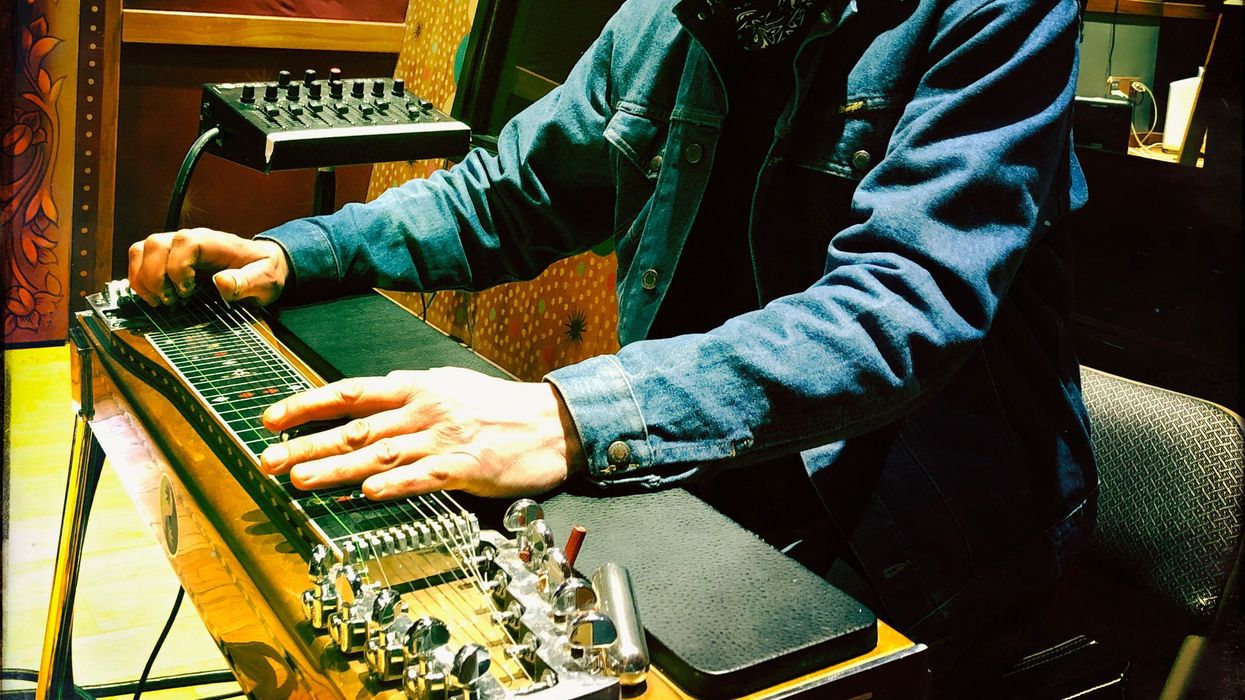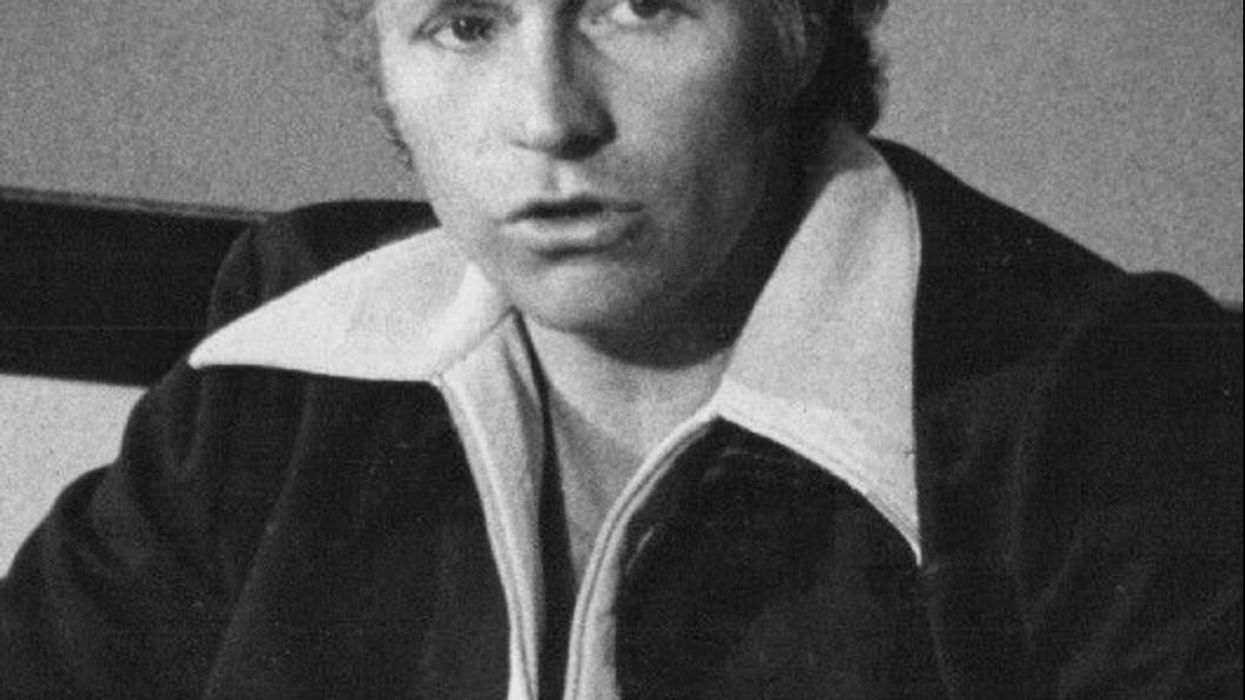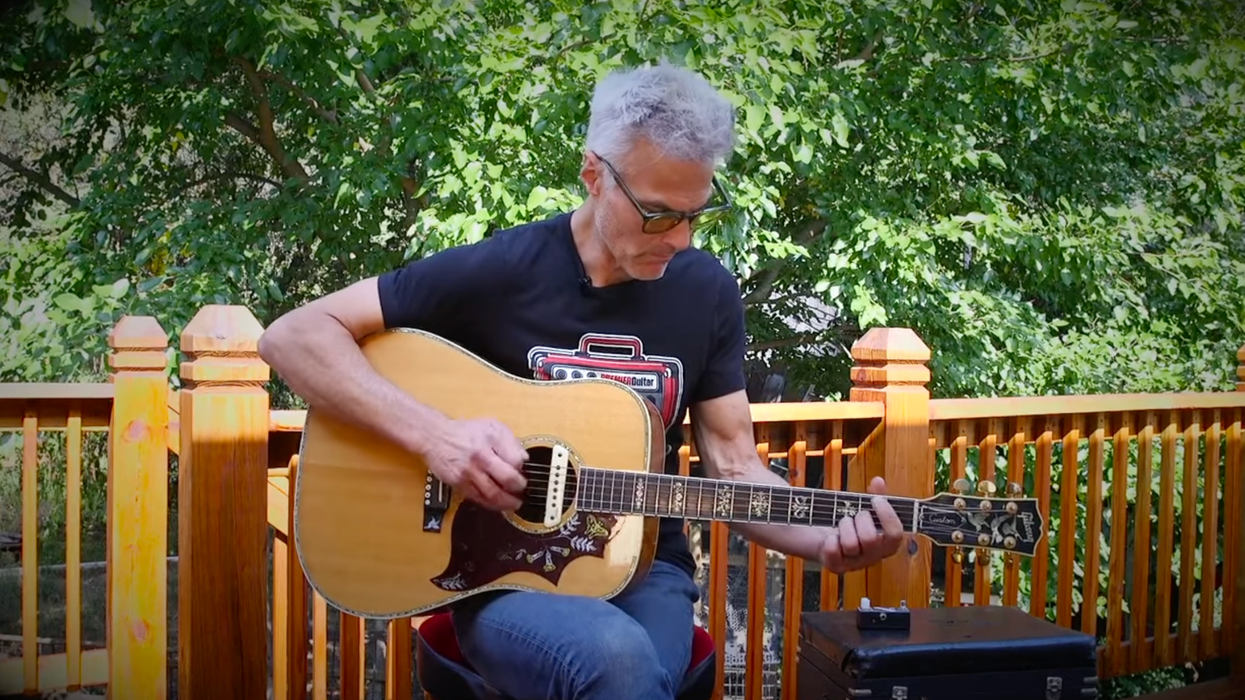Often with multi-act shows, limited budget, space, and inputs on the mix necessitate that some acts share a house band. Because I’ve been slugging it out for 30-plus years in Nashville, I occasionally get hired to lead it. A few weeks ago, I was lucky enough to get the call to lead for “Rock to Remember,” a concert/live auction collab between Guitars for Vets (an organization that provides guitars to veterans struggling with PTSD) and Gibson Gives.
We had a killer lineup, including Jared James Nichols, Dave Mustaine of Megadeth, Kirk Fletcher, and Tonic frontman Emerson Hart. In addition to supporting those acts, I was asked to do one of my songs. There was only room for a three-piece band, and I needed a rhythm section who were intuitive enough to nail a pressure gig with limited or no rehearsal, diverse enough to cover pop, blues, rock, and metal, and could sing harmony. I called drummer Duran Crone and bassist Logan Hatcher, with whom I’ve played enough jam-type gigs that I knew they could hit the curve. As an added bonus, Hatcher served six years in the Marines, which might inspire some vets to see one of their own making it in the music industry.
It’s a bit unnerving playing with talented celebrity musicians you don’t know. But when you’re performing in front of a live audience, it's filmed for broadcast, and it's a no-rehearsal-plug-and-pray, that takes it up a notch. I wasn’t worried about Jared James Nichols and Kirk Fletcher. I knew they would both do something blues-based. Put four good to great players who haven’t played together onstage and tell them to play blues: it’s going to be interesting.
"The idea of trying to cover Marty Friedman’s solo on “Symphony of Destruction” in front of a very intimidating Dave Mustaine was terrifying. Although the internet is full of children who can nail that solo, I cannot."
Nichols walked into the crowded greenroom at the Gibson Garage with just his ’52 Les Paul. I introduced him to Crone and Hatcher, who hadn’t heard Nichols’ song yet. We walked to the only quiet place we could find—a large, tiled bathroom. Nichols played “Baby Can You Feel It” on his phone while I wrote a chart and the guys tried to discern their parts. Then we went onstage, Nichols told us about the form, and we ran it once during soundcheck. Nichols gave us a little more direction, then we went back about an hour later and nailed it live. Nichols is such a driving force that you really can’t get lost playing with him.
Kirk Fletcher was even easier. It was a hectic day, so the details are fuzzy, but I don’t think Fletcher made it to soundcheck. He just texted me saying something like, “Let’s do a blues shuffle in A.” Fletcher met Crone and Hatcher as we walked onstage to perform. Fletcher plugged in, turned up, counted it off, and played his ass off. It couldn’t have been less stressful nor more fun.
Tonic’s Emerson Hart was like dessert. He was playing “If You Could Only See” and “You Wanted More,” two songs I genuinely loved back when there was music on MTV. In gigs like this, I rarely learn a solo note for note. Not that I don’t want to, it’s just that I’m not a particularly good mimic. Even if I get the notes right, it usually feels stiff and inauthentic. I usually start where the recording started but let it go where it goes. Some artists don’t like that, some do. Hart seemed cool with my improv and the performance went well. He has an iconic voice that has grown richer with time. He played and sang great, was fun, funny, and all about helping the cause.
The idea of trying to cover Marty Friedman’s solo on “Symphony of Destruction” in front of a very intimidating Dave Mustaine was terrifying. Although the internet is full of children who can nail that solo, I cannot. Maybe if I dedicated the next 10,000 hours of my life to it, I could get close, but it would still be like bad karaoke. So, I was hugely relieved when Gibson’s brand president Cesar Gueikian volunteered to cover it. He only had a weekend to prep but covered it with ease. Thanks Cesar.
The best part of this gig is that it raised funds for veterans battling PTSD. Studies prove what guitarists already know: playing music is a powerful therapy tool.
Two of my beloved nephews, Joe and John Bohlinger, were teenagers when they joined the Marines and went from hunting and fishing in Wyoming and Montana to heavy combat in Afghanistan. They voluntarily put themselves through years of a truly hellish, life-changing war because they wanted to keep us safe. That kind of trauma leaves an indelible mark. I’m grateful to be part of an organization that does something to try and help them.











![Rig Rundown: Russian Circles’ Mike Sullivan [2025]](https://www.premierguitar.com/media-library/youtube.jpg?id=62303631&width=1245&height=700&quality=70&coordinates=0%2C0%2C0%2C0)






